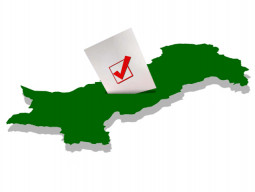
The break-up of the Muslim League proved to be the last straw for the nine-party alliance, Islami Jamhoori Ittehad(IJI).
The PPP entered into electoral agreement with the Muslim League-Junejo on September 25, 1993. The two parties formed the new alliance, Pakistan Democratic Front.
The most popular party of urban Sindh and the third largest of the country, the Muttahida Qaumi Movement, was in deep crisis at the time of the 1993 elections. Its leader Altaf Hussain had left the country in 1992 and sought asylum in the United Kingdom. In May 1992, the military launched a massive operation against organised criminals in Sindh. A number of MQM leaders were rounded up in Karachi.
In June 1992, the breakaway faction of Haqiqi emerged with the Muttahida Qaumi Movement, with the new group adopting the name of Mohajir Qaumi Movement-Haqiqi.
MQM (Altaf) boycotted the election to the National Assembly, yet it participated in the Sindh Assembly elections and won from its traditional centres.
Published in The Express Tribune, May 10th, 2013.




































1713853507-0/MalalaHilary-(2)1713853507-0-270x192.webp)







COMMENTS
Comments are moderated and generally will be posted if they are on-topic and not abusive.
For more information, please see our Comments FAQ